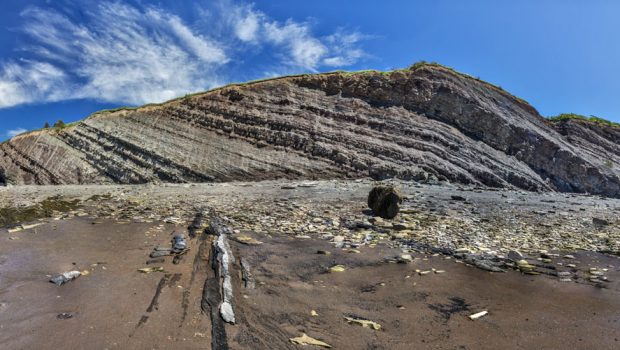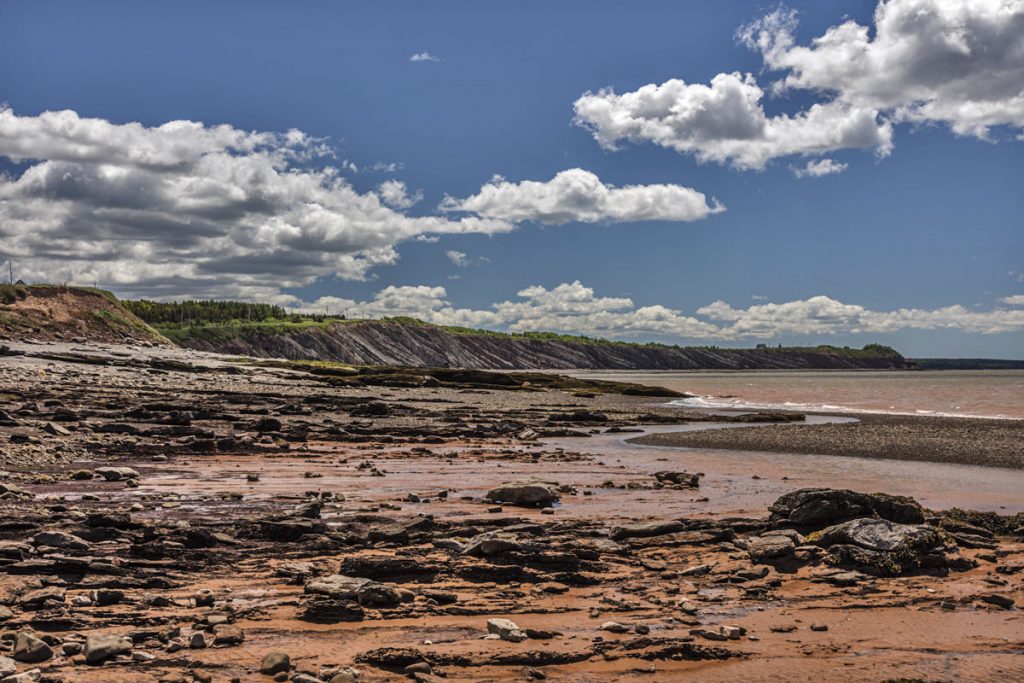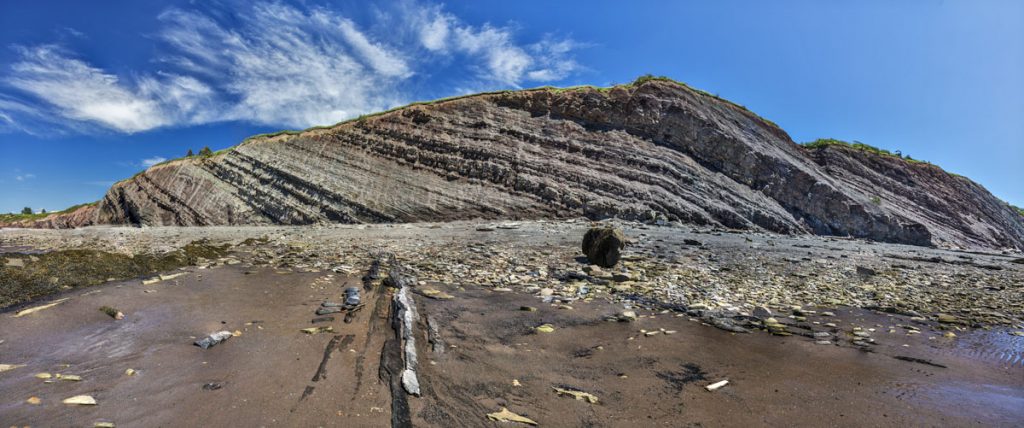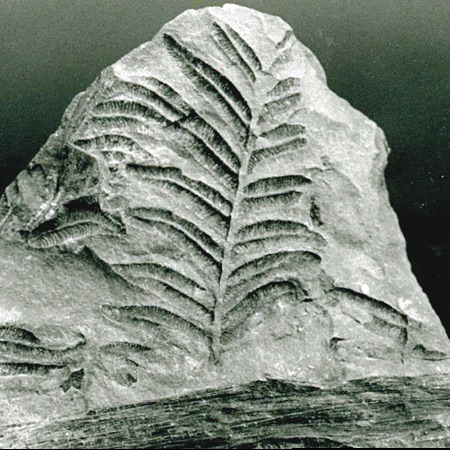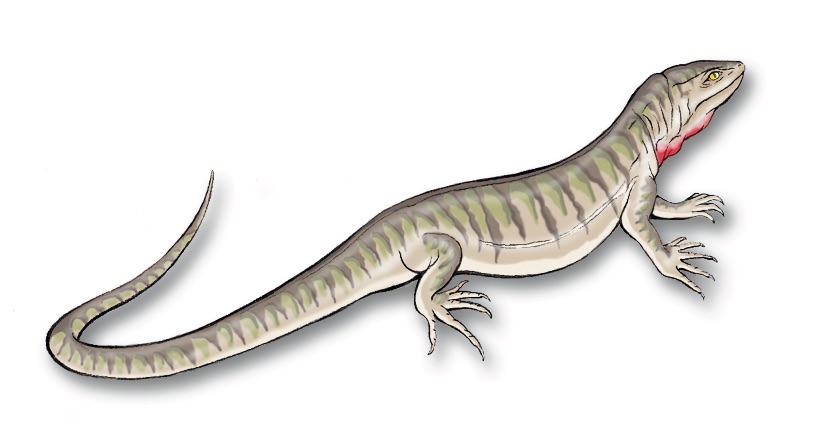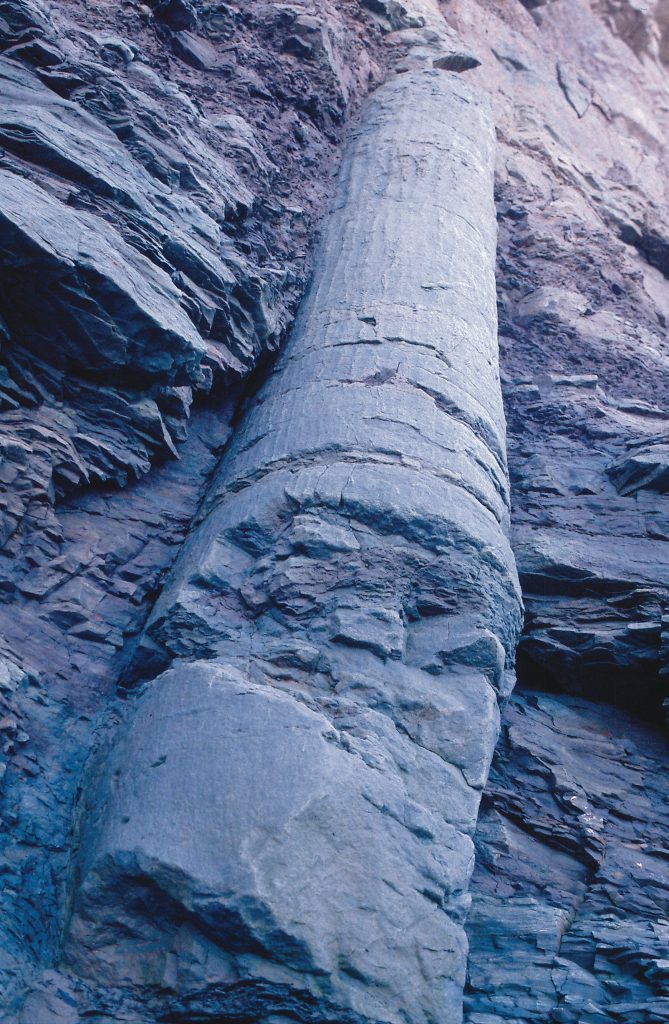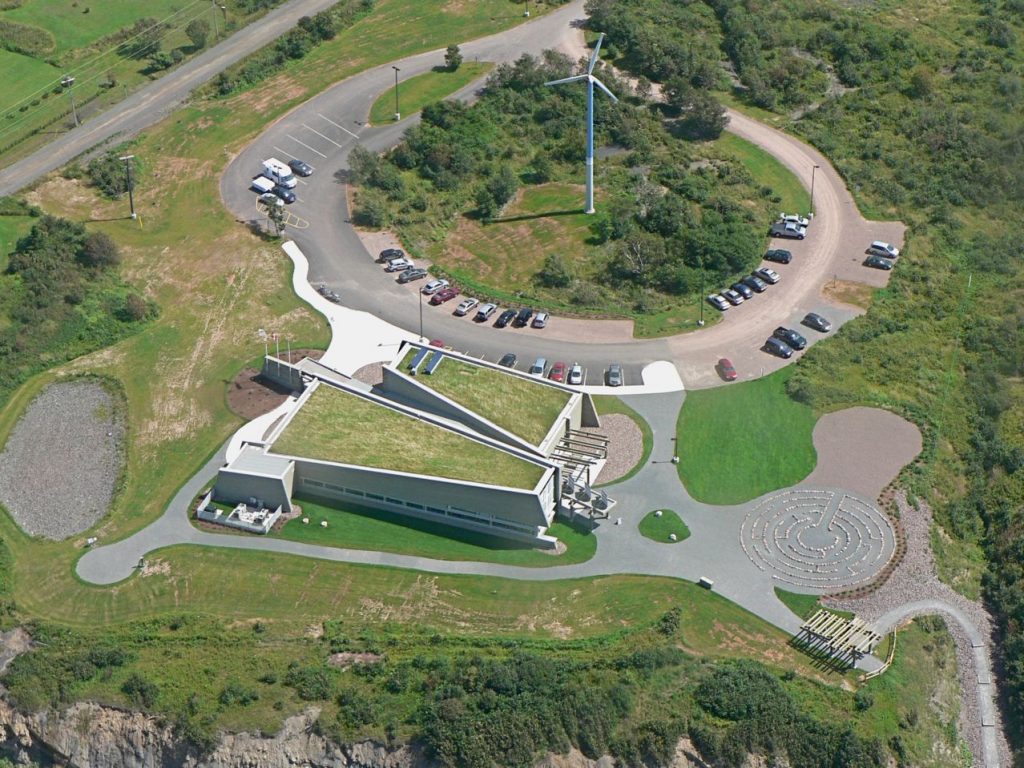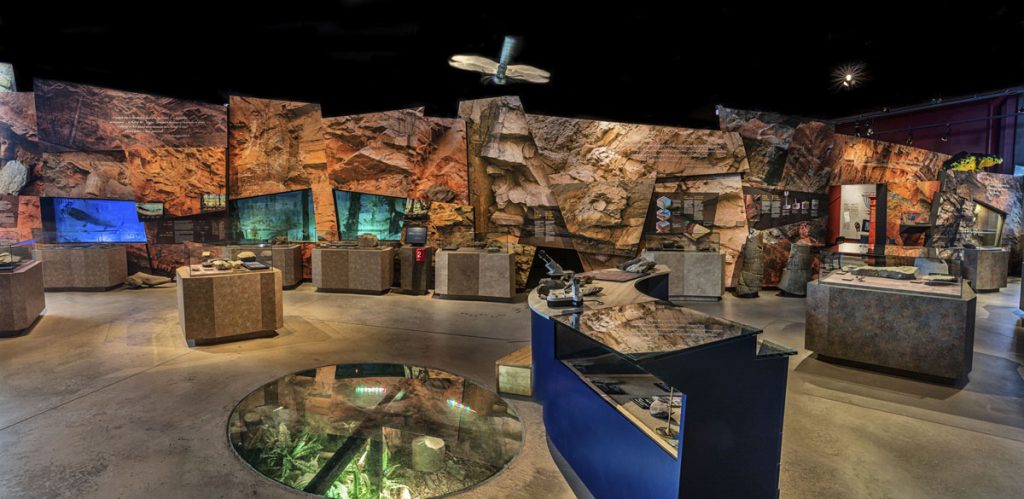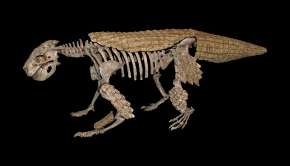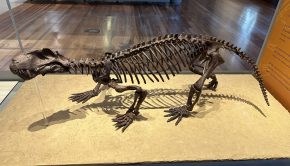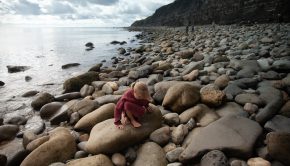Episode 94: Joggins Fossil Cliffs
The Carboniferous was a time of huge swampy forests, big trees, and lots of life both on land and in the ocean. One world-renowned fossil site from approximately 300 million years ago is the Joggins Fossil Cliffs, located on the Bay of Fundy in Nova Scotia Canada. Joggins is one of Canada’s five palaeontology-based UNESCO World Heritage Sites, and is one of the best places in this world to find fossils from this time period.
Why are the Joggins Fossil Cliffs so important? What makes this locality unique?
In this episode, Liz speaks with Dr. Melissa Grey, the curator at the Joggins Fossil Centre to learn more about why this region is so important. We discuss the variety of fossils, from plants to invertebrates to vertebrates, and how the interesting preservation has resulted in virtually an entire ecosystem being preserved.
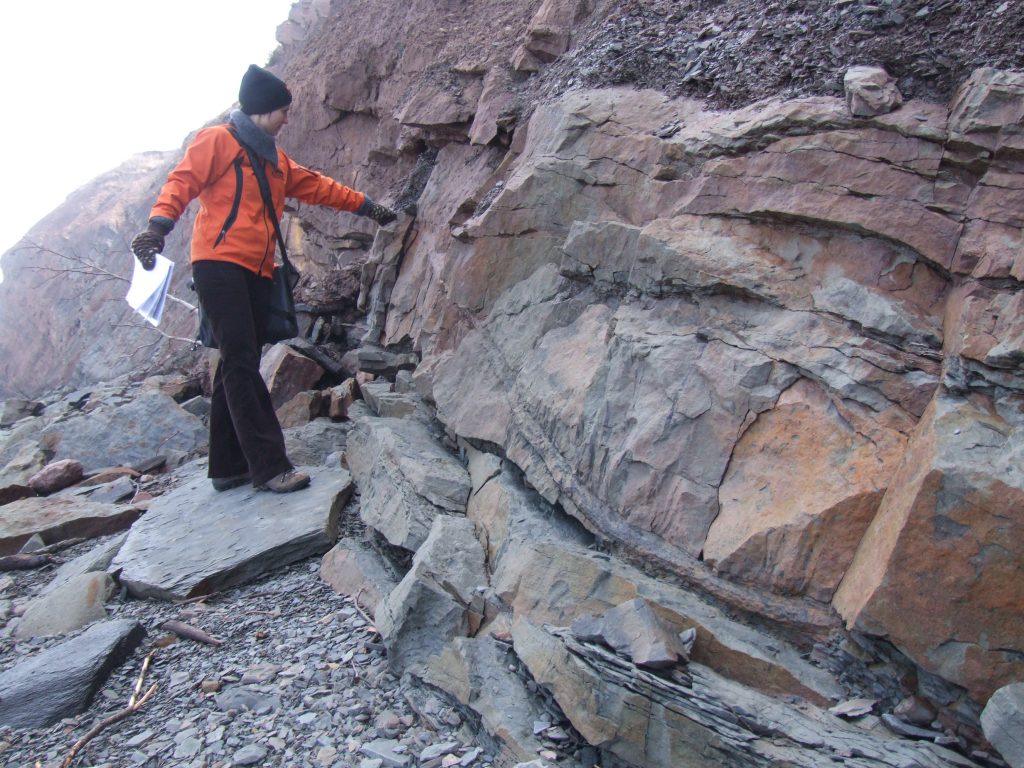
Curator Dr. Melissa Grey looking at a lycopod tree root (Stigmaria) in situ in the cliff. Image copyright Joggins Fossil Institute.
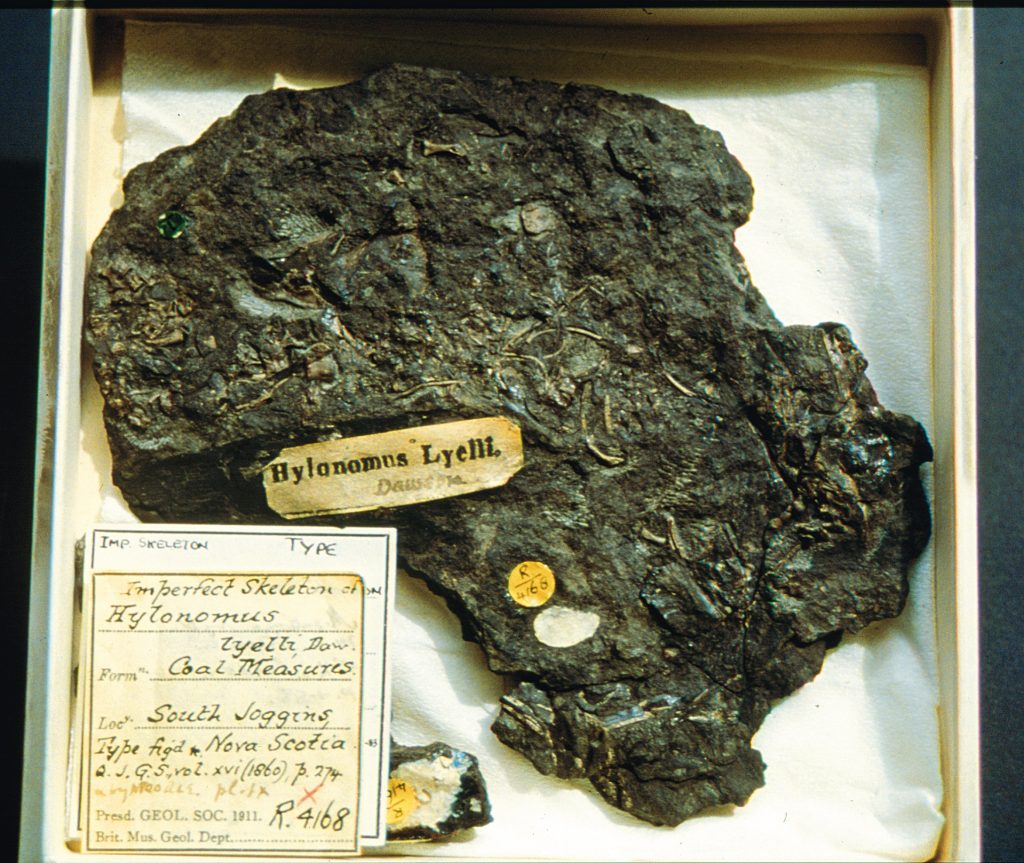
Hylonomus lyelli, found at Joggins in the 1850s, housed at the Natural History Museum (London). Image copyright Joggins Fossil Institute.
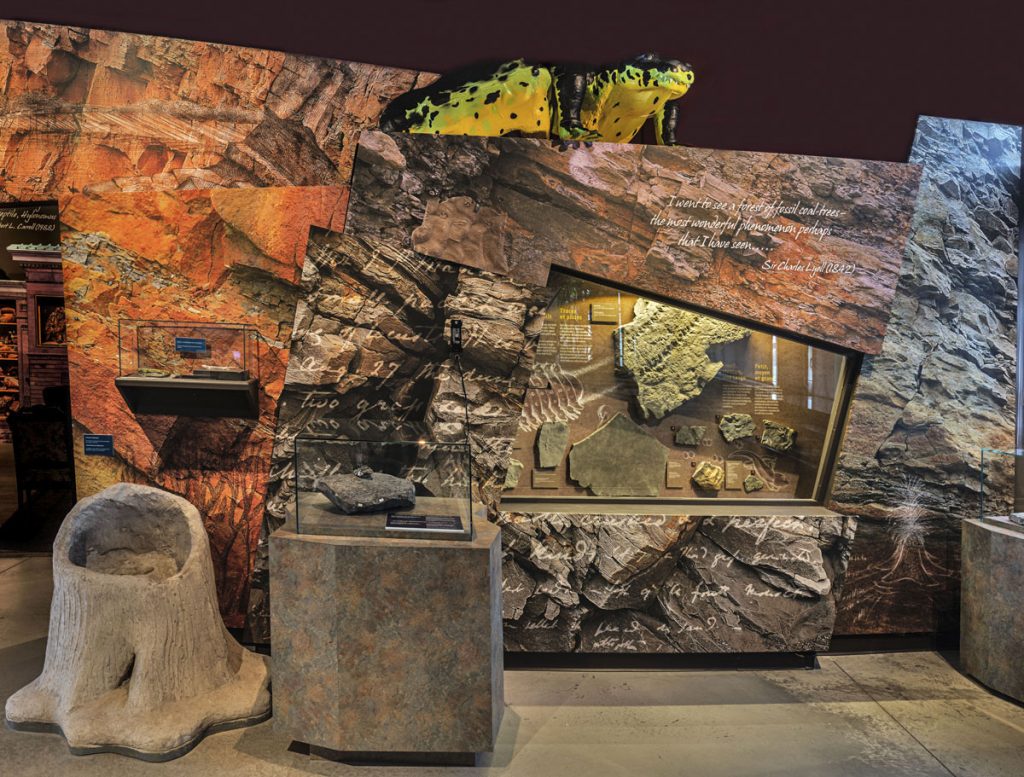
“I went to see a forest” display at the Joggins Fossil Centre. Image copyright Joggins Fossil Institute.

